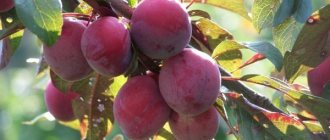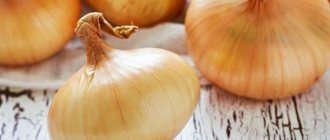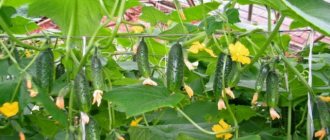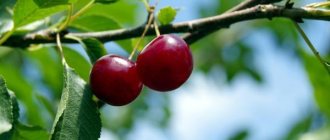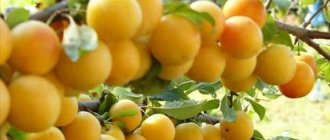After watermelons, melons are the second most popular melon crop. The juicy, aromatic, sweet pulp of these plants leaves no one indifferent. Like most vegetables and fruits, melons contain a large number of beneficial substances for humans. These include carbohydrates, which are easily absorbed by the body, minerals, proteins, vitamins, and fiber. In addition, in Eastern countries, where melons have been cultivated for a very long time, melon extracts and oil extracted from the seeds are successfully used for medicinal purposes. In most cases, melons are consumed fresh. But, besides this, you can make candied fruits, jam, and jam from melon.
In the minds of most residents of our country, melons are associated with Central Asia. Of course, the conditions for the growth of this crop in this hot region are the most favorable. But, modern varieties of melon allow them to be grown both in central Russia and in the Non-Black Earth Region. We will consider them. Like most plants, melon varieties are divided into early ripening - 60-70 days before fruit ripening, mid-early - 70-80 days, mid-ripening - 80-90 days, late ripening - more than 100 days.
Recommended varieties
Melon variety “Early 133”, 61-65 days of ripening
A competent choice of varieties is the key to successful cultivation of melon in the Moscow region. The main indicator that should be taken into account when choosing melons is the speed of ripening - only suitable for varieties with early ripening. Others simply do not have time to ripen in a short time compared to summer in the south of the Moscow region.
You should not aim to grow large-format fruit. It is best to pay attention to the number of days from melon binding to ripening, which is indicated in the description on the seed package. The optimal period is 60-80 days.
To learn more about Ethiopian melon, click here: https://6sotok-dom.com/ogorod/yagody/dynya/efiopka-tehnologiya-vyrashhivaniya.html
You can also try growing summer melons, which take about 90 days to ripen and are more productive. According to experienced breeders, the best varieties of melons for growing under natural conditions in the Moscow region are the following:
- Start 133.
. Altai lemon yellow amber New Don . golden collective farmer . pineapple Early soil Livadia Dream . Scythian gold Sweet pineapple Delano . Iroquois f1 Galileo Cinderella . Gerda f1 Canary Islands Aikido Autumn
Young melon Aikido f1
Planting scheme and technology
For plants to take root, the soil must be +15...+18°C. And for them to develop properly – above +20°C.
Melons require space for growth and development; at least 1 m² is allocated for each bush.
Add 10-15 g of nitrophoska and rotted compost into the holes and moisten the soil.
Planting pattern:
- distance between holes – 1.5 m;
- the distance between rows is 1 m.
A bush is placed in the center of the hole and covered with soil. In this case, the root collar should remain at soil level.
Growing seedlings
Planting melons 30 days after germination, optimal size for planting melons
In the Moscow region, melons can only be grown through seedlings, followed by outdoor planting . Planting melon seeds on shoots begins after April 15, when daylight is long enough and there is no need for additional plant lighting .
You should not do this earlier: Plants that are too large and older than a month do not root well in the soil . But you should choose the sunniest window in your house for pots of melon shoots . Ideally, this should be an isolated balcony .
Seedlings are grown in separate pots to prevent damage to the root system during transplantation . The seeds are soaked or germinated in cheesecloth, which allows them to grow faster . The pots should be far enough apart to prevent the plants from touching each other's leaves . Optimal room temperature is + 20-25 0C during the day and 18-20 0C at night .
Harden off 7-10 days before planting seedlings, increase ventilation and lower the air temperature day and night by 5 0C . During the growing season, seedlings must be fed twice with a complex of mineral fertilizers . Plant the seedlings in the soil about a month after germination if each plant already has 3-5 leaves .
Planting seedlings in the soil
It is important to know that melon has the property of growth . Females on melon plants first form flowers on the side shoots and then on the main shoots . Therefore, it is recommended to clamp more than 3-5 leaves on top . This can happen while growing seedlings .
How to choose seeds and prepare them for planting
The quality and volume of the harvest always depends on the condition of the planting material. Therefore, seeds for planting melons must be purchased only from specialized retail outlets.
What to pay attention to:
Manufacturer and price. It is better to purchase products from well-known manufacturers. On the modern market, melon seeds are presented in different price categories. But we must remember that high-quality planting material cannot be very cheap.
Integrity of the bag. There should be no damage: tears, punctures, signs of liquid filling.
Melon seedlings
Shelf life. Expired seeds have a low germination rate. And in some cases they may not germinate at all.
If melons are planted for the first time, it is recommended to purchase several zoned varieties. Such planting will guarantee a harvest and will allow you to choose the most suitable species for a particular area.
When independently harvesting melon seeds, you should use for planting only those seeds that have been stored for at least three years.
Before planting, special treatment of melon seeds is necessary. If they do not have a special shell, they are pickled in a strong solution of potassium permanganate for 20 minutes. Then soak for 12 hours at a temperature of 20-23 degrees in a dense layer of gauze.
In this case, the gauze must be moistened every 4 hours. Afterwards, the seeds are laid out on burlap and left to germinate. When at least 5% of the seeds have hatched, they can be sown.
When growing this melon crop in the Moscow region, it is recommended to harden the planting material.
To do this, soaked, swollen melon seeds are kept at a low temperature of -3 degrees for three or two days. This increases the resistance of an adult plant to cold and promotes early fruit set.
Preliminary preparation and hardening are necessary to reject empty seeds and improve the germination of planting material.
Landing in the ground
It is very important not to damage the melon root system when planting in the ground..
Melon seedlings should not be planted in the soil until the third decade of May . Until then, in the Moscow region there is still a possibility of lower temperatures and even night frosts, which will be detrimental to melons .
On the middle track, melons are usually grown in greenhouses . It is unlikely that one of the vegetable growers will take a separate greenhouse for this particular crop . It is usually planted together with other plants .
If there is a choice, tomatoes are preferable to cucumbers, since they, like melons, require less moisture . The place in the southern guest's greenhouse is the sunniest .
If you are interested in growing melons in your country house, we recommend that you read the following article: //6 . com//dynya/dynya/-dachnom-uchastke . .
The soil in the greenhouse must be prepared for planting on the shore . Within a week, form holes measuring 50x50 cm 20 cm apart from each other, place 1.5 kg of humus in each place, sprinkle 2-3 cm of soil . Before planting, water the holes with warm water, place them there and carefully remove them from the pot without damaging the roots .
It is important to note that the earthen ball with roots should not be planted to a great depth; it is better that it is 2 cm above the litter . This prevents the subsexual knee of the melon from collapsing .
Temperatures must be monitored after the vessel has landed . During night cooling, also in a greenhouse, the plants are further insulated by placing frames over the plants and protecting them .
Further care for melon
The melon bush needs to be shaped to achieve maximum output. To do this, pinch it as it grows, leaving 2-3 lashes. The number of fruits is also normalized; 3–5 fruit ovaries are left on one bush. They also pinch off the shoots above the fruits so that they do not draw food onto themselves.
Soil care
The row spacing and space between the bushes should be clear of weeds. Parasitic grasses suppress cultural plantings and create high humidity, which in turn attracts fungal spores.
The root system of the melon crop must be regularly saturated with oxygen. The near-trunk circle of plants is loosened to a depth of 10 cm. To protect the stems from overheating, the bushes are earthed up following the example of potatoes.
Watering
Young bushes are watered daily in small portions - 0.5 liters per bush. Water should not stagnate and should not fall on the foliage. As the bush matures, the water rate is increased, and with the onset of flowering, the interval is reduced to once every 3–5 days. Moisturizing the crop is completely avoided 2 weeks before harvesting.
Care and recommendations for growing
melon on the grill.
Within 7 days after planting, the melon does not require special care; ventilation of the greenhouse is required only if the thermometer column shows values above 30 0C . The first watering occurs after the soil has dried, after about 5-7 days, when the melon is simultaneously supplied with nitrogen fertilizers . Water the melon very carefully with well-warmed water .
If there was no squeezing during the seedling period, this should be done in such a way that the side shoots begin to grow faster . 7-10 days after planting, make a patch - leave one or two strong whips standing and tie them to the trellis . All other whips will be removed .
As a rule, insects freely enter the greenhouse and pollinate plants . But in rainy weather, you can pollinate the melon by hand and transport the pollen with a brush or cotton swab .
It is important to monitor the formation of fruits . As soon as 2-3 melons reach a size of 5-7 cm in diameter, the remaining ovaries are removed so that the fruits have time to ripen . As the melon grows, place a net over each melon and attach it to the trellis .
Every week they water the melon with warm water . Cold water stunts growth and causes root rot . When ovaries emerge, irrigation increases and decreases during maturation . You can organize a drip irrigation system on the ground with your own hands - the water goes directly to the roots of the plants . This is how the melon becomes sweet .
Melon is poured with warm water.
There is no need to rush to harvest . Aged melon can be recognized by its characteristic cracks in the skin and aroma, and can be easily separated from the stem .
In this article you will find everything about melon and much more: ://6 . com/ . ogorod /// . .
According to reviews of vegetable growers near Moscow who managed to grow melons in their summer cottages, it differs from imported Central Asian melons only in its size . It is in no way inferior in taste and aroma . It is especially pleasant to serve handmade melon on the table . And the correct choice of assortment and compliance with all recommendations help to achieve excellent results .
Watch a video about growing melons in the Moscow region:
Page 2
melon is a very tasty and sweet melon crop . Since this is a thermophilic plant, it is grown in our country mainly in the southern regions .
But what are those who live in the northern regions of Russia doing and planning to do, growing this berry on their land? How do you grow sweet and juicy fruits?
On the one hand, it's worth buying seeds . Don't forget growing techniques . Some gardeners plant seedlings outdoors (you can read here how to plant melons on seedlings), while others prefer to grow melons in greenhouses .
Below is a description of all varieties of melons recommended for cultivation in Siberia.
When is the best time to plant
Seedlings are grown in soluble peat pots . This way, the delicate roots of the seedlings are not damaged when transplanted into the ground, and they do not get sick.
Seeds are sown no earlier than April 15, and seedlings are transplanted into the ground in late May - early June.
Important! You cannot delay the transplantation period - seedlings older than 25-30 days will not produce high-quality fruit-bearing plants.
In the Moscow region in May, the likelihood of cold snaps and return frosts remains; when planting at this time, the bed must be covered at night.
The best varieties for Siberia
It should be noted that both early and late varieties are ideal for Siberia . It is best to plant them with seedlings so that they grow faster and the ripe berries have a good taste .
So, let's look at the famous varieties of melons:
- “Sympathy” is a mid-early variety (Raymond melon is very popular among mid-early melon varieties). The first ripe fruits appear after 100-108 days. Follow with long whips. The leaves are medium sized, green, with a slightly dissected shape. The melon has an oval shape. Structurally elastic without pattern with uniformly thick lattice. Skin color is dark yellow. The weight of a melon is from 1.2 to 2 kg. The inside of the berries is light cream in color with thick flesh. The taste is crispy, tender, juicy and very sugary. According to the description, the seeds are large, narrow oval in shape, and have sharp edges. The average yield is 0.7 kg per square meter.
- "Sybarita's Dream" is an ultra-mature variety. The time from the first cabbage to the ripe berry is from 50 to 55 days. Average size of microorganisms. The shaft is thin, the design is not rough. A thick melon has an oval appearance. The structure is elastic, with intermittent green stripes. The color is light yellow. Berries weigh from 300 grams. The skin has an elastic and not thick structure. Within white. The taste is juicy, crispy and honeyed with a delicate aroma. High yield - from one square meter in one season you can harvest up to 20 kg. It can bear fruit up to freezing point. It is resistant to many pests.
- “Cinderella is an early maturing species (along with Amal and Torpedo melons). The time from shoots to ripening of berries is from 2 to 2.5 months. Follow with long whips. The leaves are medium sized and green. The leaf shape is slightly decomposed. The berry has an oval shape. The structure is elastic, without a yellowish pattern. There is a continuous mesh on the skin. The weight of the berries is from 1 to 2.5 kg. The inside of the melon is light cream in color and is 3 to 4 cm thick. The taste is crisp, juicy and very sweet. The berry contains up to 11.5% dry matter and up to 9.5% total sugar. The seeds are narrow oval-shaped and ivory-colored. A good harvest, up to 10-15 fruits can be removed from the bush.
- Altai melon. A ripe berry appears after 2-2.5 months. The stem is medium in size, with a small number of braids. The size of the main whip is from 1.5 to 2 meters. The berries are oval in shape. The structure of the melon is elastic, slightly segmented. The skin is lemon yellow or light orange without a pattern. The weight of the berries ranges from 800 grams to 2 kg. The inside of the melon is light orange or white in color with not very thick flesh. The taste is juicy, sugary and very aromatic. It can withstand absolutely low temperatures. The yield is good - in one season you can collect up to 15 kg of fruit from a bush.
- “Siberian honey is a middle-aged variety. The plant stems are woven and medium in size. The berries look like a ball. The structure is elastic, without a pattern and yellowish color. The weight of the berries is from 1 to 2 kg. It has light melon with cream. The taste is juicy, sweet and very aromatic. Ideal for cold weather. Planting occurs when seedlings are grown on 3-4 leaves. It is advisable to plant in warm soils up to +14 degrees. It is recommended to plant 1-2 seedlings per 1 square meter. m.
- “Gold is a type of middle age. The time from seedlings to ripe berries ranges from 72 to 87 days. Use a small number of whips for the stem. The leaf is kidney-shaped with dense edges and green in color. Varietal berries are round and oval. The structure is elastic. The first melons have a lattice. The skin is yellowish or orange without a pattern. The weight of the berries reaches 2 kg. The meat is cream or white in color. The inside of the melon has a thick, dense and delicate texture. The taste is juicy, sugary, honeyed and very aromatic. The yield is good - up to 25 tons of fruit per 1 hectare. Good characteristics - stable yield from year to year, transportability.
- The “Honey Tale” is a type of medieval tale. The fruit ripening period ranges from 75 to 85 days. The stems of the plant are woven and medium in size. The fruits have a round appearance. The surface structure is smooth with a mesh. The surface is painted from light yellow to bright yellow. The weight of ripe berries ranges from 2 to 4 kg. The flesh is light cream or white. The taste is juicy, delicate, soft and surprisingly sweet. Due to its high sugar content, it can be used to produce various sweets and candied fruits. The plant and fruit are resistant to pests and are easy to transport. Seeds can be planted directly outdoors or first in seedling pots and then in soil.
- “Cappuccino is an early ripening. The time from the appearance of microorganisms to the ripening of berries is 2-2.5 months. A ripe berry has a round or oval appearance. The structure is elastic and has a pronounced mesh. The skin is thin, bright yellow. The weight of a ripe melon is from 800 grams to 1.5 kg. The meat is white or cream in color and has excellent taste. The taste is delicate, soft, juicy and sugary with a pleasant aroma. Meat contains up to 17% sugar. The variety has a high yield, from a bush throughout the season to 15 kg of fruit. Seeds can be planted directly in open ground and through seedlings. Sowing is usually carried out in early April on seedlings, in the soil in mid-May.
- “Dessert” is a mid-ripe variety. The time interval from the first shoots to ripened fruits ranges from 72 to 94 days. Medium sized stems. The fruits are oval in shape and medium in size. The surface structure has segments; in the recesses of the segments there are blue or green stripes. The entire surface also has a large mesh. Skin color is bright yellow or greenish yellow. The weight of a ripe berry is from 1 to 2 kg. The thickness of the cellulose is from 3 to 4 cm. The color of the flesh is white or light cream. The meat tastes juicy, grainy, honey-like with a pleasant aroma. He resists completely different defeats. At high humidity, fruits do not break and do not retain their shape perfectly. The yield of the variety is high - up to 31 tons of ripened fruits per 1 hectare.
The most productive melon varieties for the Moscow region
In order for the melon yield to be as high as possible and the plant care to be minimal, it is necessary to choose the right crop variety.
In the climatic conditions of the Moscow region, it is better to grow early melons or mid-ripening varieties. The following types are particularly productive:
Collective farmer. Medium ripening variety. The shape of the fruit is spherical, the flesh is tender and juicy. Melon size up to 1 kg.
A pineapple. Mid-ripening oval-shaped melon. The fruits are large, weighing up to 3 kg. It tolerates transportation well and has a long shelf life.
Cossack 244. A melon variety that is classified as medium in terms of ripening and weighing up to 1.8 kg. The pulp is dense, juicy, sweet, slightly crunchy with a bright aroma.
Good harvest of melons
Tamanskaya. Early melon is oval shaped. A small mesh appears on the skin. The pulp is tender and juicy. Has high transportability. The weight of one melon does not exceed 1.3 kg.
Charlotte. Medium ripening variety. The fruits are oval, average weight 1.7 kg. The pulp is tender, orange, strong aroma, sweet taste. Suitable for fresh consumption and also used in cooking.
Ozhen. Medium ripening variety. It has high taste qualities. The average weight of the fetus is 1 kg. The pulp is tender, juicy, sweet, greenish-white in color. It has high productivity.
Golden. Mid-early variety. The fruits are round in shape, average weight is 1.9 kg. Has high tasting characteristics. The aroma is strong, the taste is sweet. The fruits can be used for preservation.
Cinderella. Early melon with high yield. The fruits are round in shape, large, the average weight of one melon is 2.1 kg. The pulp is juicy, aromatic, sweet.
New from Don. Early, highly productive variety. The pulp is sweet, crumbly, juicy. The fruits are medium size, up to 1.7 kg. The skin is dense, covered with a coarse mesh.
When choosing a melon variety for the Moscow region, you should take into account not only the ripening period, but also the branching nature of the species. It is also worth choosing varieties with high resistance to diseases and pests.
Secrets of cultivation
Planting melon seeds in peat pots
To obtain a good harvest, the soil must be prepared from autumn onwards: It must be well watered, fertilized in the form of peat, roasted and loosened.
In addition, it is worth paying attention to tips for growing this gourmet plant, which help achieve high yields:
- At the beginning of spring, the place where seeds or seedlings are planted should be dug up and fertilized. It is recommended to add a little sand to the soil. Melons do not like clay soil;
- Seeds must be soaked in a special solution before planting. You can buy a soaking solution at the store or make your own. For the solution, you need to mix boric acid, zinc sulfide and water. Soaking is used to germinate seeds. This will speed up their growth. They usually get wet around the clock;
- If melons are planted through seedlings, the seeds must first be planted in special peat pots with a diameter of 10 cm. The soil for the seedlings should have the following composition: a glass of wood ash, sand and peat.
Melons must be equipped with thorns.
Seeds are sown in early April. For this:
- Seeds are planted in open ground in late April - early May. Sailing from mid-May to early June;
- The planting holes should be spaced at a distance of 70 to 90 cm. We recommend planting them together with the soil;
- on cool days the plant should be covered with foil;
- Plants should also be regularly weeded and watered;
- twice a week they have to fuck. But this must be done very carefully, because pumpkins have branched roots.
Site selection and proper soil preparation
For quick rooting and good development of the plant, it is recommended to plant melons on the south side of the site. The soil should have good aeration. Sandy loam, loamy, gray forest soils and chernozems are best suited.
Harvesting melons
The acidity of the soil is neutral; cultivation on slightly alkaline soils is also allowed. Groundwater is no higher than 2-2.5 meters.
The site should have free access to sunlight and daylight. This crop grows very poorly in the shade.
Melon also does not like cold and gusty winds. Melon does not tolerate stagnant water and flooding. Therefore, it is recommended to plant it on flat plots of land.
Melon develops well and bears fruit in nutritious soils. Therefore, preliminary preparation is carried out. It is divided into two stages:
In autumn, humus is scattered around the perimeter of the designated area at a rate of 4 kg per 1 sq. m. meter.
Dig to the depth of a bayonet shovel. If the soil is heavy or clayey, sand must be added. It is evenly scattered on the ground before digging. For every square meter you need 5 kg of sand.
In early spring, spreading wood ash will help speed up the melting of snow. Its use also helps regulate soil acidity.
In April, it is recommended to water the area with warm water and cover it with film. It is pulled over special arcs with a radius of 2 m. After the frost has stopped and the soil has completely thawed, it is dug up. At the same time, 7 kg of humus and 45 g of nitrophoska per square meter are added to the soil.
You can replace humus with nitrogen fertilizers. Fresh manure can be added to the soil only in the fall; adding it in the spring is strictly prohibited. This will lead to the death of the plant.
Such preliminary soil preparation is necessary for any method of growing melon.
Reviews from gardeners
Alexey, 55 years old. year.
“I grew melons on my property for a long time. Since the climate in Siberia is cool, the selection of berry varieties must be very careful. Before growing this crop, I decided to get acquainted with all the varieties that are suitable for growing in our region. I listened to reviews from friends and looked up the characteristics of varieties on the Internet. I decided to grow varieties such as Altai, Sybarita Dream, Cinderella and Dessert. The yield is really high. And the melons are the same as the reviews on the pages.
And the fruit tastes amazing! These are now the best varieties for me and I grow them every season!
Elena, 30 years old. year.
“I bought a piece of land from my husband to grow pumpkins to sell. For a long time they searched for suitable varieties. We read all the descriptions of the varieties and heard reviews from friends. We stopped for dessert, sympathy, Sybarita's dream, honey-Siberian and cappuccino varieties. Yes, the truth is that they say that these are the best varieties for Siberia. The fruits grow quickly and their taste is excellent. In the first year they had high yields. Now we plant these melons every year and get a good harvest!
Michael, 48 years old.
year.
“Pumpkin crops have been practiced for a relatively short time. I thought that these fruits do not grow well in our region. When I saw the description of melon varieties for Siberia, I immediately became interested in these crops and decided to start growing melons. The varieties I chose were “Honey Tale”, “Golden”, “Dessert” and “Sympathy”. Yes, good varieties, or rather, the best. In fact, there is no lie, the fruits are delicious, sweet and very juicy. Maturity matures quickly. And the harvest is high.
There were enough of them for the whole family and even for sale!
melon is a berry grown in many regions of Russia. Of course, when choosing a variety to grow, you should take into account the climate of the region. The future harvest depends on this. For Siberia, it is advisable to choose varieties that have excellent frost resistance and fast ripening time. In addition, we must not forget about the technology of growing plants and caring for them.
If you follow all the above rules, you will be able to achieve high yields and the fruits will be of the highest quality.
Watch a video about growing melon in Siberia:
Page 3
Many people who want to grow melons cannot decide what kind of melon they want to grow. After all, there are hundreds of varieties, and the question here is which is better and which is suitable for the soil - this is already a question.
Ethiopian melon is a large to medium-sized early-early variety characterized by its unique flavor and taste.
The advantage of this variety is that it can be stored for a long time and is easy to transport. More information about growing melons in Ethiopia can be found in our article.
Harvesting
The yield of melon depends on the variety; in open ground, 1-1.5 kg of crop per 1 m² is usually harvested. The fruits grow small, about 1 kg, but are sweet, juicy, and aromatic.
How to tell if a melon is ripe
The maturity of a melon in the garden is determined by the following characteristics:
- change in color of the rind to a typical varietal color;
- the appearance of a fragrant aroma;
- drying of the stalk, easy separation of the fruit;
- the peel is not hard, slightly springy under your fingers;
- When struck lightly, a melon produces a dull sound.
The ripening period of a particular melon variety is written on the bag of seeds. You can also calculate the approximate time by visually observing the development of fruits in the garden.
Storage Features
Early varieties are harvested at the stage of full ripeness and immediately used for food.
Important! Melons that have not yet fully formed will not be able to ripen during storage; they will remain tasteless and spoil.
The shelf life of melons that are harvested at the stage of technical ripeness is on average two weeks after harvest. It is better to store them in a cool place with low humidity.
What difficulties may arise when growing melons in a greenhouse or greenhouse?
I have already noted that all melon varieties are very unpretentious garden dwellers who rarely suffer from pests or diseases. But I still want to arm you with advice in case difficulties arise.
Pest Control
The main pests that threaten melons are melon aphids and spider mites. The harm from them is approximately the same - they suck out cell sap, weakening the plant, depriving it of vitality.
Prevention of these uninvited guests is simple for me - I follow the rules of crop rotation, do not grow melons after inappropriate predecessors, and promptly control weeds in the greenhouse. If pests appear, I dilute a soap solution: 3-4 tbsp. spoons of laundry soap shavings per 5 liters of water. I spray the plantings with this liquid several times a week. If this folk method does not work, I use (according to the instructions) “Karbofos”.
aphids in the garden
spider mite in the garden
Disease Prevention
I’ll tell you about the most common diseases of melons:
- Anthracnose. When affected, yellowish blotches and spots appear on the ground part of the plant. Then they turn a dirty pink color. A surefire remedy for anthracnose is spraying with 1% Bordeaux mixture. Prevention - preventing too high air humidity in the greenhouse.
- Powdery mildew. First, a white coating similar to flour appears on the leaves, and then on the shoots. If the disease is started, it spreads to the fruits. As a result of such a defeat, the tops wither and wither, and the melons begin to deteriorate. To stop the disease, I spray the plants with sulfur products. The best prevention of powdery mildew is disinfection of seeds and thorough autumn cleaning of the greenhouse.
- Olive spot. Spots and brownish ulcers appear on leaves and stems. If the infestation is ignored, they also cover melons. The disease can be stopped by systematic treatment with drugs containing sulfur.
If last year there were plants in the greenhouse that were affected by diseases or pests, it would not be superfluous to arrange preventive treatment for the melons:
- Ash solution. For 5 liters of water – ½ cup of ash, 2-3 tbsp. spoons of laundry soap shavings
- Copper oxychloride solution. Suspension concentration – 0.4%. I treat the melons with the mixture approximately every 2 weeks.
- Solutions “Fitosporin”, “Zircon”, “Tsitovit”. For preventive purposes, two-stage spraying is sufficient: when 3-4 true leaves appear and budding.
Now you know the main instructions and secrets that will help you harvest a luxurious melon harvest even in the harsh Siberian and Ural conditions. I advise you to pay due attention to the preparation of both the seedlings and the greenhouse. Don’t forget about disease and pest prevention.
Greenhouse preparation
First of all, I advise you to decide whether your greenhouse is suitable for growing melons:
- Although this plant is small, it needs a large area of nutrition. If you have a compact greenhouse, you will have to install trellises so that the melon grows vertically, upward.
- The minimum height of the greenhouse is 2 meters. It should have supports installed, to which you will tie the shoots. I installed dense vertical posts (metal rods, thin plastic pipes) and stretched rows of thick wire between them every 50 cm in height.
- The maximum distance of melon beds from windows and transparent walls of the greenhouse is 0.5 m. Most melons are photophilous - they develop poorly when there is a lack of sunlight.
- The greenhouse must be thoroughly cleaned of plant debris and remnants of last year's plants. It is ideal if you refresh the top layer of soil.
For those living in Siberia and the northern regions, I additionally recommend lighting the greenhouse to use a phytolamp. Melons require at least 12 hours of daylight for proper development. If there is a threat of sudden or prolonged frosts, heating devices are also needed.
Preparing the soil for planting seedlings
Melons prefer the following substrate:
- Loams (but not “pure” clay). If the soil is heavy, correct this by adding sand - a bucket per 1 m2 is enough.
- Soil with neutral pH. If the substrate in the greenhouse is acidified, add lime in the fall, and chalk or dolomite in the spring.
When digging in the fall I add (per 1 m2):
- Humus - ½ bucket.
- Superphosphate – 20-25 g.
- Potassium sulfate – 10-15 g. Sometimes I replace it with natural fertilizer – a 1-liter jar of ash.
- Urea – 10-15 g.
Another “recipe” for autumn preparation of the substrate (per 1 m2) - with replacement of the top layer of soil:
- Peat + sand in a ratio of 3:1.
- Chalk – 250 g.
- Azofoska – 30-40 g.
With such preparation in the spring, it is enough to loosen the soil and begin forming the beds.
Neighbors and predecessors
It is best to plant melons in a greenhouse where cucumbers previously lived. Other predecessors are also not prohibited, with the exception of melons and tomatoes.
Excellent neighbors for melon are beans, peppers, eggplants and herbs. The latter are effective “repellents” of harmful insects. Joint planting of melons – melon and watermelon – is popular. But keep in mind that both cultures require a lot of space to develop.
I do not recommend the proximity of melon and cucumbers - these plants have different requirements for air humidity. In addition, these are related crops - cross-pollination is possible, which significantly improves the taste of melons.
Formation of beds
If your greenhouse can hardly be called insulated, I recommend, following my example, building a warm ridge:
- I remove the top layer of soil 20-25 cm high and place the substrate nearby.
- In the formed depression I put drainage - crushed stone, expanded clay, wood chips, crushed wood. On top is a light layer of dry grass and hay.
- The next layer (5-6 cm) is made of humus. I cover it with rotten leaves or small sawdust.
- The last layer is when the garden soil returns to its place.
Finally, I water the bed with warm water and cover it with black agrofilm. After a few days, it will warm up well and will be ready to receive young seedlings.
How to grow strong and healthy melon seedlings
Regardless of the growing method, melon seeds are not planted directly into the ground.
The seedlings are pre-prepared. It is sown in March. At the end of May, or better yet, in the first ten days of June, seedlings can be planted in a permanent place of growth. To grow strong seedlings you need:
Buy pots for seedlings. It is better to use peat or paper ones, since melon does not tolerate transplantation very well. Planting a plant in a new place in these pots significantly reduces the risk of its death.
Ripening melon
Prepare a nutrient soil mixture. To do this, peat and sand are mixed in a ratio of 9:1.
For 10 liters of such soil, add a glass of wood ash, 30 g of superphosphate and 15 g of potassium phosphate. To disinfect peat, it must be steamed. You can also use ready-made soil for seedlings.
Plant the seeds. Sawdust drainage is placed at the bottom of the pots. Cover them with the prepared soil mixture and lightly pour water on top. This is necessary to compact the soil. Then the soaked seeds are deepened into containers by 2-3 cm. The pots are covered with film and kept in a warm place until the first shoots appear.
Topping. After the seeds have sprouted, the film is removed from the container and the pots are placed on the windowsills on the south side. When the sprouts enter the phase of 4-5 leaves, you need to pinch them.
Observe the light regime. If the sprouts quickly stretch upward and are pale in color, it is necessary to provide them with additional lighting. To do this, the pots are placed under a phytolamp. It should be at a level of 10 cm from the top leaf of the plant.
When growing seedlings, special attention must be paid to watering. It is carried out as necessary, but the soil should not be over-moistened. This can cause rotting of the root collar (black leg).
When watering, it is also recommended to apply fertilizing. The first time you can fertilize the sprouts in April with mullein solution.
It is prepared in a ratio of 1:10 with water. The second time the seedlings are fed before planting. To do this, you can use any complex fertilizer.
Growing melons in the field
Growing melon seedlings is not a very difficult process. By following all the basic recommendations, you can independently prepare high-quality planting material.
It is very convenient to use special plastic glasses for any varieties of melon that are cultivated in the Moscow region. They have a stable shape, drainage holes and are usually black in color.
The latter quality helps retain heat in the container. Transplanting seedlings from such cups is also easy to do using the transshipment method. You just need to put a little pressure on the glass and the earthen lump will easily separate from the walls.
If for some reason this does not happen, you should simply cut off the plastic.
As a soil mixture for seedlings, you can take leaf and turf soil in equal proportions as a basis. Approximately half of the mass of such land should be added with humus. The mixture must be mixed and 30% of deoxidized peat of the total volume of the substrate added. If the soil is too dense, you can add a little more cultivator. They can be sand and old sawdust.
You need to fill the glasses 80% with the resulting substrate, then make 1.5 cm indentations and place the seeds. We recommend pre-germinating melon seeds for the Moscow region. To do this, take a small piece of fabric made from natural fibers and moisten it with warm water. Next, melon seeds are placed on the fabric and covered with another layer of fabric.
The resulting package should be placed in a warm place and moistened several times a day with warm water from a spray bottle and ventilated. When white sprouts appear, the seeds are ready to be planted. This procedure will speed up the development of seedlings and allow you to immediately discard seeds that will not germinate. It is important that the sprouts do not grow too much and do not get mixed up.
Typically, germination time is 1-3 days, depending on the variety. If the tip of the sprout has darkened, the seed should not be planted. We recommend planting the seeds in stages, waiting until each one hatches. For germinated seeds, it is better to use tweezers for planting. It is important to carry out the first watering with warm water. You can add a little manganese to it to prevent blackleg.
During the process of seedling growth, we recommend carrying out preventive watering with a fungicide at least once more. Melon is a very heat-loving crop. Therefore, to prevent fungus, not only correct watering is important, but also protection from the cold. For this reason, during the germination period it is necessary to ensure a temperature of about 25 degrees. Then, you should maintain it at least 18 degrees.
We invite you to familiarize yourself with it. No need to search anymore! 7 super recipes for lightly salted tomatoes are already with you
If transplantation is carried out in open ground, it is important to first harden off the seedlings. When the temperature stabilizes, containers with seedlings should be taken out into fresh air. First, the seedlings are left for 1.5-2 hours, increasing the duration of walks over time. Dinahs must spend several nights outside before being released.

